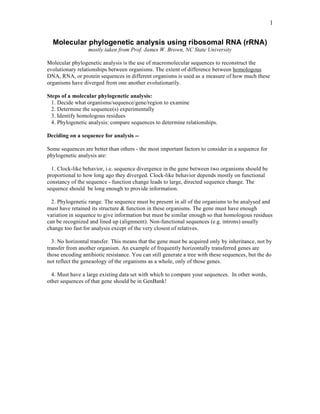1. Molecular phylogenetic analysis uses DNA, RNA, or protein sequences to reconstruct evolutionary relationships between organisms. The extent of differences between homologous sequences is used to measure divergence.
2. Key steps include deciding sequences to examine, determining sequences experimentally, aligning sequences to identify homologous residues, and comparing sequences to determine relationships and construct phylogenetic trees.
3. The 16S rRNA gene is often used because it is universally present and conserved enough to align while also containing rapidly and slowly evolving regions useful for relationships at different timescales.













